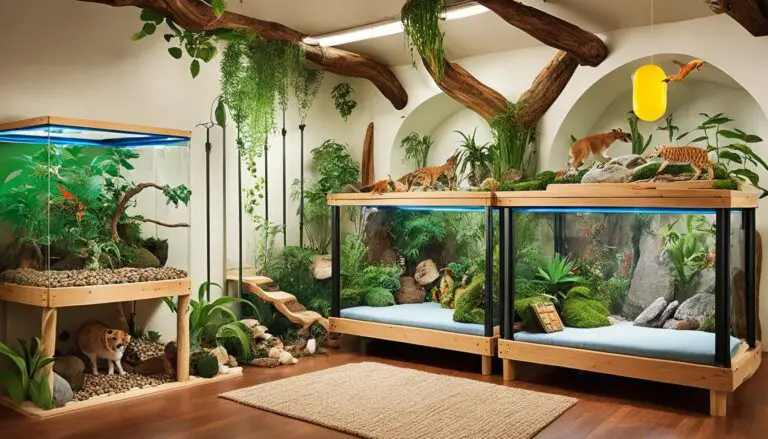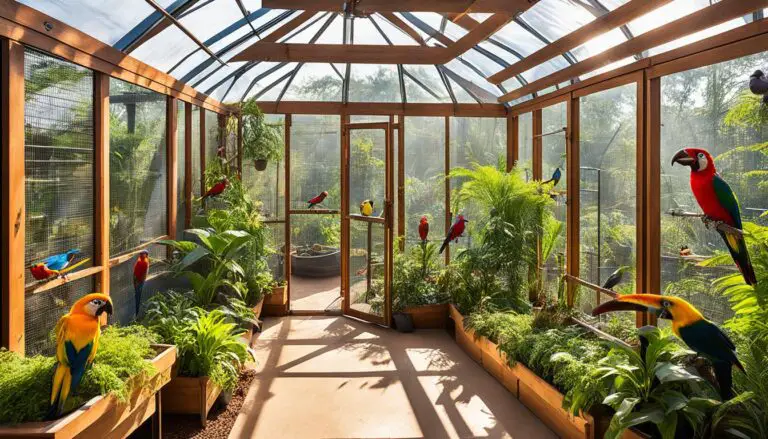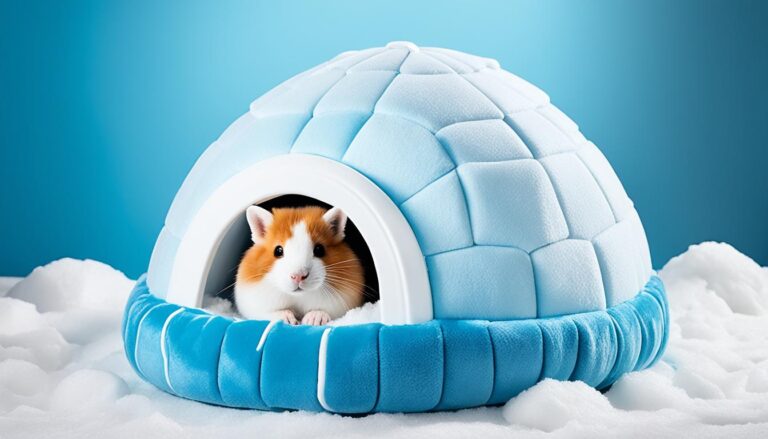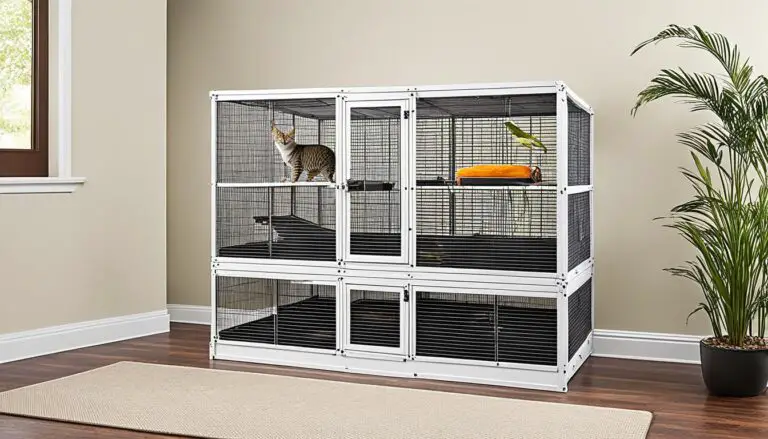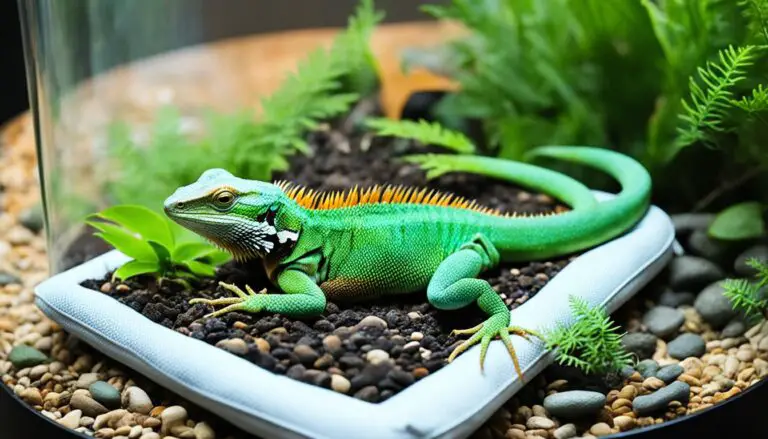How to Create a Safe Outdoor Space for Your Exotic Pet [Guide]
As pet owners, we understand the importance of providing a safe and stimulating environment for our beloved companions.
When it comes to exotic pets, such as reptiles, birds, or small mammals, creating a suitable outdoor space can greatly enhance their quality of life.
Not only does it allow them to experience natural elements like fresh air and sunlight, but it also provides opportunities for exercise and mental stimulation.
In this article, we will guide you on how to create a safe outdoor space for your exotic pet, ensuring their well-being and happiness.
Key takeaways:
- Assess the environment for suitability and potential hazards before introducing your exotic pet to the outdoor space.
- Secure the outdoor area with appropriate enclosures, fences, or barriers to prevent escape.
- Provide shelter and shade using structures and natural elements to protect your pet from extreme weather conditions.
- Implement measures to ensure safety from predators and unwanted animals in the outdoor space.
- Choose pet-friendly plants and materials, avoiding toxic substances that could harm your exotic pet.
- Regularly monitor and supervise your pet’s activities in the outdoor area to ensure their well-being.
- Offer enrichment and stimulation through toys, climbing structures, and interactive play.
- Maintain hygiene and cleanliness by establishing a routine cleaning regimen and proper waste disposal.
- Prioritize the health and mental well-being of your exotic pet when creating a safe outdoor space.
- Consult with a veterinarian for specific guidelines and recommendations based on your exotic pet’s needs.
Assessing the Environment
- Consider the climate and temperature to ensure they align with your pet’s requirements.
- Identify any potential hazards such as toxic plants or sharp objects that could harm your pet.
- Check for any potential escape routes and address them before introducing your pet to the outdoor space.
Before introducing your exotic pet to the outdoor space, it’s crucial to assess the environment carefully.
Consider the climate, temperature, and overall suitability of the area.
Exotic pets have specific environmental requirements, so it’s essential to ensure that the outdoor space meets their needs.
Additionally, identify any potential hazards such as poisonous plants, sharp objects, or other dangers that could pose a risk to your pet’s safety.
Securing the Outdoor Area
- Build or install sturdy enclosures or cages suitable for your pet’s size and needs.
- Use fencing, netting, or barriers to prevent escape and keep out unwanted animals.
- Ensure the enclosures are well-maintained and free from any gaps or weaknesses.
To prevent your exotic pet from escaping or encountering hazards outside, it’s essential to secure the outdoor area properly.
Depending on the size and type of pet, you may need to build or install enclosures such as cages, aviaries, or fences.
Ensure that the enclosures are sturdy, escape-proof, and provide ample space for your pet to move around comfortably.
If your pet is small or has specific requirements, consider using netting or mesh to enclose the area effectively.
Providing Shelter and Shade
- Create shelters or hiding spots using structures like hutches, caves, or birdhouses.
- Utilize natural elements such as trees, shrubs, or plants to provide shade and protection.
- Ensure the shelters are properly insulated and ventilated for your pet’s comfort.
Just like humans, exotic pets need shelter and shade to protect them from extreme weather conditions.
Create shelters or hiding spots within the outdoor space using structures like hutches, reptile caves, or birdhouses.
Incorporate natural elements like trees, shrubs, or plants to provide shade and protection from the sun.
Ensure that the shelters are well-ventilated, insulated, and large enough for your pet to rest or hide comfortably.
Ensuring Safety from Predators
- Install motion-activated alarms or deterrents to ward off potential predators.
- Use fencing or netting with small gaps to prevent access by larger animals.
- Be aware of local wildlife and take precautions to protect your pet from any potential threats.
In an outdoor environment, exotic pets may encounter predators or other animals that could harm them.
Take appropriate measures to protect your pet from potential threats.
Install predator deterrents like motion-activated alarms, sprinkler systems, or fences with small gaps to keep unwanted visitors away.
Be aware of local wildlife that could pose a danger to your pet and take necessary precautions to minimize the risk.
Selecting Pet-Friendly Plants and Materials
- Research and choose non-toxic plants that are safe for your pet if they come into contact with them.
- Avoid using pesticides or chemicals that could be harmful to your pet.
- Select pet-safe materials for enclosures, such as untreated wood or non-toxic paints.
When creating an outdoor space for your exotic pet, be mindful of the plants and materials you choose.
Some plants can be toxic or harmful if ingested by animals.
Research pet-friendly plants and incorporate them into the outdoor area.
Avoid using pesticides or chemicals that could be harmful to your pet.
Similarly, select materials for enclosures or structures that are safe, durable, and free from any toxic substances.
Monitoring and Supervising
- Regularly check the outdoor space for any hazards or signs of damage.
- Supervise your pet while they are in the outdoor area to ensure their safety and well-being.
- Be attentive to any changes in behavior or distress signals from your pet.
Creating a safe outdoor space for your exotic pet requires regular monitoring and supervision.
Conduct routine checks of the area to identify and address any potential dangers or maintenance issues.
Keep an eye on your pet’s activities while they are outdoors, ensuring they don’t get into trouble or exhibit signs of distress.
By being actively involved in your pet’s outdoor time, you can quickly respond to any emergencies or concerns that may arise.
Providing Enrichment and Stimulation
- Add toys, climbing structures, or natural elements like branches for your pet to explore.
- Engage in interactive play and provide opportunities for exercise.
- Rotate and introduce new toys or stimuli to keep your pet mentally stimulated.
An ideal outdoor space for your exotic pet goes beyond safety – it should also offer enrichment and stimulation.
Include toys, climbing structures, or natural elements like branches or rocks to encourage exploration and exercise.
Interactive play with your pet is crucial for their mental well-being.
Spend quality time with them in the outdoor area, engaging in activities that keep them entertained and active.
Maintaining Hygiene and Cleanliness
- Establish a cleaning routine for the outdoor space, including the removal of waste and debris.
- Dispose of waste properly and prevent odor buildup.
- Regularly inspect and clean enclosures or structures to maintain hygiene standards.
To ensure the well-being of your exotic pet, it’s crucial to maintain proper hygiene and cleanliness in the outdoor space.
Develop a regular cleaning routine for the enclosures, removing any waste, debris, or uneaten food promptly.
Dispose of waste responsibly, following local regulations, and prevent the buildup of odors or harmful bacteria.
A clean and hygienic environment is essential for your pet’s health and overall well-being.
Conclusion
Creating a safe outdoor space for your exotic pet is a rewarding endeavor that can significantly benefit their physical and mental health.
By following the guidelines provided in this article, you can ensure that your pet enjoys a stimulating and secure environment.
Remember to assess the environment, secure the outdoor area, provide shelter and shade, and implement measures to protect your pet from predators.
Select pet-friendly plants and materials, monitor and supervise their activities, and offer enrichment opportunities.
By prioritizing safety and well-being, you can create an outdoor space that allows your exotic pet to thrive.
FAQs
Can all exotic pets be kept in an outdoor space?
Not all exotic pets are suitable for outdoor environments.
Some may require specific temperatures, humidity levels, or protection from predators.
Research the specific needs of your pet and consult with a veterinarian to determine if an outdoor space is appropriate.
Are there any plants I should avoid in the outdoor area for my exotic pet?
Yes, some plants can be toxic to animals. Avoid using plants like lilies, azaleas, oleanders, or daffodils in the outdoor space.
Look for pet-friendly plants or consult with a veterinarian to ensure the safety of your exotic pet.
How often should I clean the outdoor space for my exotic pet?
Regular cleaning is essential to maintain hygiene.
Clean the enclosures and remove waste at least once a week, or more frequently if needed.
Dispose of waste properly and keep the outdoor space clean to prevent the accumulation of bacteria or parasites.
Can I leave my exotic pet unsupervised in the outdoor space?
It is not recommended to leave your exotic pet unsupervised in the outdoor space for extended periods.
Always supervise your pet to ensure their safety, prevent escapes, and respond quickly to any emergencies or signs of distress.
Is it necessary to provide a heating or cooling source in the outdoor area for my exotic pet?
Depending on the climate and the specific needs of your pet, you may need to provide additional heating or cooling sources in the outdoor area.
Exotic pets have temperature requirements, and it’s essential to create a comfortable environment that suits their needs.
Peter Stones is the founder of Exotic Pets Place, the leading online resource for exotic pet care information.
With over 10 years of hands-on exotic pet ownership experience, he is deeply passionate about sharing his expertise to help others properly care for their unusual pets.
When he's not writing extensively researched articles or connecting with fellow exotic pet enthusiasts worldwide, you can find Peter at home tending to his own beloved menagerie of exotic animals.

![How to Create a Safe Outdoor Space for Your Exotic Pet [Guide], wood house with a porch](https://exoticpetsplace.com/wp-content/uploads/2023/06/How-to-Create-a-Safe-Outdoor-Space-for-Your-Exotic-Pet-Guide-wood-house-with-a-porch.jpg)
